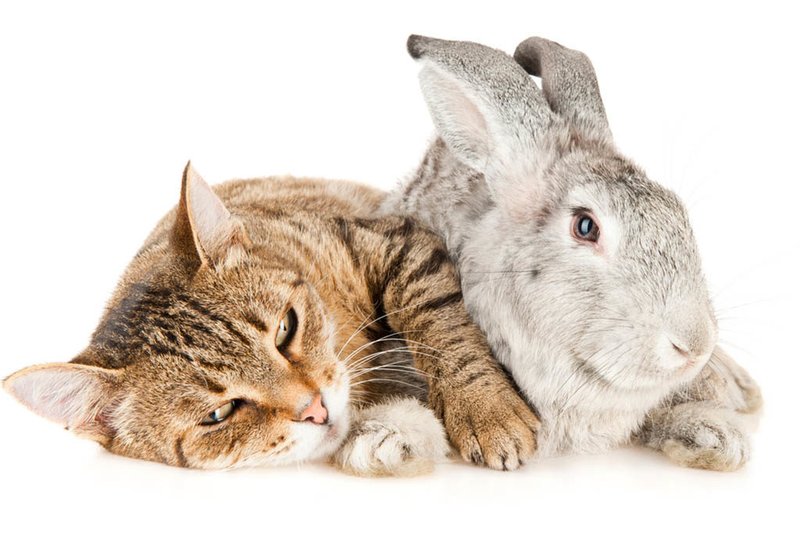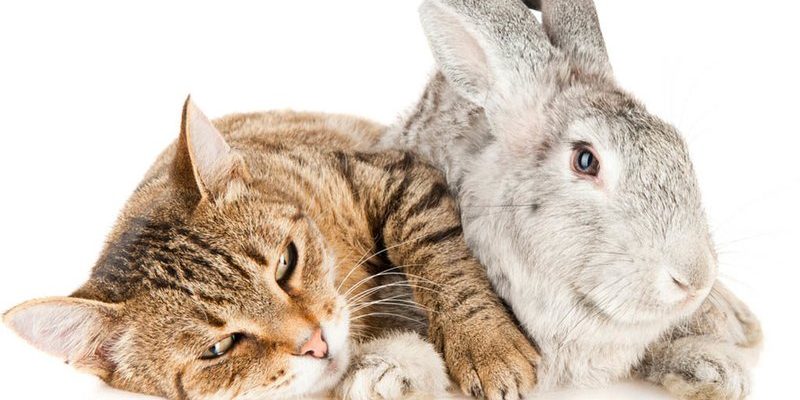
Honestly, it’s a bit like having a family reunion with a mix of personalities. Just like some people hit it off and others clash, rabbits can have varying relationships with other pets. So let’s dive deeper into how these furry friends can coexist or if they simply belong in different corners of the house.
Understanding Rabbit Behavior
To figure out if rabbits can get along with cats or dogs, it helps to understand how rabbits behave. Rabbits are social animals, but they express their feelings differently than cats and dogs. They communicate through body language, thumping their hind legs to show when they’re upset or scared. When you think about a rabbit’s natural instincts, they are prey animals, which means they often see potential stressors—like a barking dog or a swatting cat—as threats.
You might be wondering how important socialization is for rabbits. Well, here’s the thing: rabbits thrive in environments where they feel secure and have companionship—ideally, from their own kind. However, with the right introduction and ongoing supervision, it’s possible for them to coexist with other pets.
When introducing a rabbit to a new pet, take it slow. Just like meeting new folks at a party, give them time to sniff around and get familiar with each other’s scents. In the next sections, we’ll dig deeper into how to create a peaceful multi-pet household.
Introducing a Rabbit to a Dog
If you’ve got a dog and are considering bringing a rabbit into your home, the first step is all about the dog’s personality. Some dogs have a high prey drive, which means they might see the rabbit as something to chase. However, other dogs can be gentle and curious, making a rabbit more likely to be welcomed into the fold.
When introducing a rabbit to a dog, follow these steps:
- Supervised Meetings: Always supervise the first few meetings. Keep the dog on a leash for better control.
- Positive Reinforcement: Reward your dog for calm behavior around the rabbit with treats or praise.
- Safe Spaces: Ensure the rabbit has a safe space to retreat to, away from the dog’s reach, like a cozy enclosure.
It’s essential to observe body language closely. If your dog is overly excited or aggressive, it might be best to rethink the dynamics or wait until your dog learns to be more relaxed.
Introducing a Rabbit to a Cat
Cats can have different reactions to rabbits, from curiosity to indifference. Just like when a cat sees a laser pointer, their instincts might kick in. Some cats can become quite playful, while others might be more laid-back. The key is to know your cat’s personality.
Here’s how to make introductions smoother:
- Gradual Introductions: Start by letting them sniff each other through a gate or a crate. This way, they can get used to each other without direct contact.
- Monitor Interactions: Like with dogs, you should always supervise their interactions, especially during those initial meetings.
- Safe Zones: Just like with dogs, ensure the rabbit has a secure area to escape when things get a little too intense.
Sometimes, cats can be quite territorial, so it’s good to be patient. If your cat seems too aggressive or stressed, it might be best to keep them separated.
Creating a Safe Environment
Now that you’ve decided to introduce your rabbit to other pets, it’s crucial to create a safe living space. A bit of preparation goes a long way.
Here are some tips to help you set up:
- Separate Living Areas: Initially, keep your rabbit in a separate area, allowing the dog or cat to adjust to the new scents without direct contact.
- Safe Hiding Places: Provide plenty of hiding spots for the rabbit—think tunnels, boxes, or even covered areas in their enclosure. This allows them to retreat when feeling overwhelmed.
- Monitoring Times: Limit the time your pets spend together at first. Gradually increase their interactions as they get more comfortable with each other.
This setup not only protects your rabbit but also helps your other pets adjust to their new housemate. Remember, it’s a process, and patience is key.
Common Misunderstandings About Rabbits and Other Pets
You might be surprised to learn that there are several myths surrounding rabbits living with cats and dogs. One common misconception is that all cats and dogs are natural enemies to rabbits. While some might see them as prey, many pets can learn to coexist happily.
Another myth is that rabbits don’t need companionship. While they are social animals, it’s best if they have interactions with beings they trust, which can sometimes include other pets.
It’s also often believed that if a rabbit feels stressed, they’ll show it through aggressive behavior. However, that’s not the case. Instead, they might simply freeze, thump, or try to hide. Understanding these signals can help pet owners make better decisions for their furry families.
Signs of Stress in Rabbits
Keeping an eye on your rabbit’s behavior is crucial, especially when introducing them to dogs or cats. Some signs of stress to watch for include:
- Thumping: This is often a signal of distress or alertness, like their way of saying, “Watch out!”
- Hiding: If your rabbit is constantly seeking out hiding places or seems withdrawn, they might feel unsafe.
- Aggressive Behavior: Although rare, if a rabbit starts to show teeth or nip, that’s a clear sign they’re not happy.
Recognizing these signs allows you to intervene and give your rabbit the time they need to feel secure.
Long-Term Considerations
Once your rabbit, dog, or cat has gotten used to one another, it’s essential to consider the long-term care and interactions among them. This includes keeping their interactions positive over time.
Here are a few things to keep in mind:
- Consistent Supervision: Even after they’ve settled down together, it’s vital to supervise their interactions, especially during playtime.
- Regular Check-Ins: Make it a routine to monitor their behavior. Changes in energy or attitude can signal stress or disagreements.
- Provide Enrichment: Keep all pets stimulated with toys, tunnels, and activities designed for each species. Boredom can lead to unwanted behaviors.
Creating a harmonious living environment requires ongoing effort and love.
When you take the time to understand each pet’s personality and needs, life with a rabbit, dog, and cat can be fulfilling and rewarding.
In conclusion, while rabbits can live with other pets like cats and dogs, it takes patience, understanding, and careful management. By paying attention to their behavior and ensuring their safety, you can create a blended pet household where all your furry friends can thrive. Cheers to building that unique and harmonious family!

